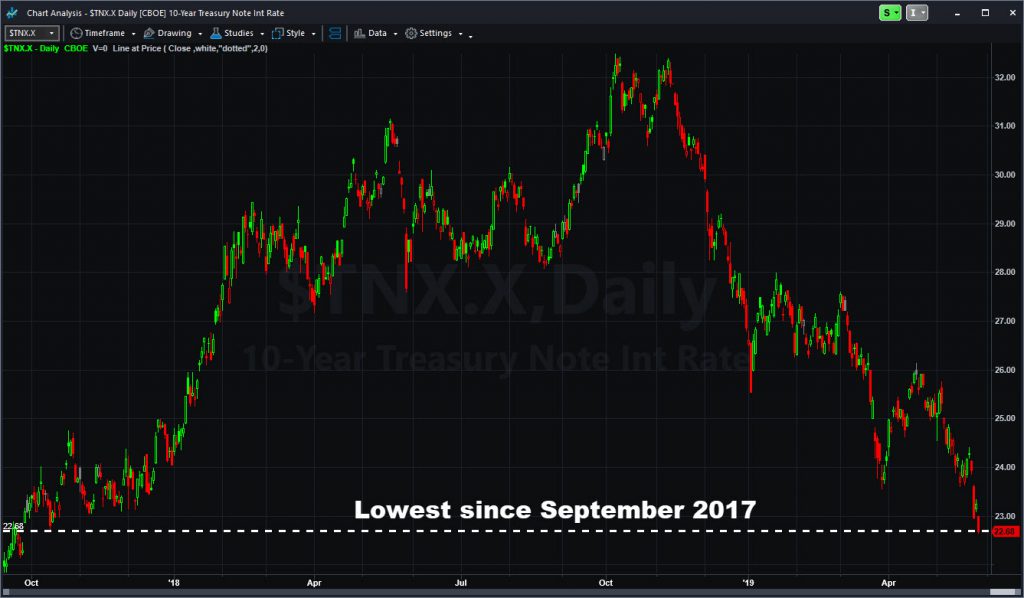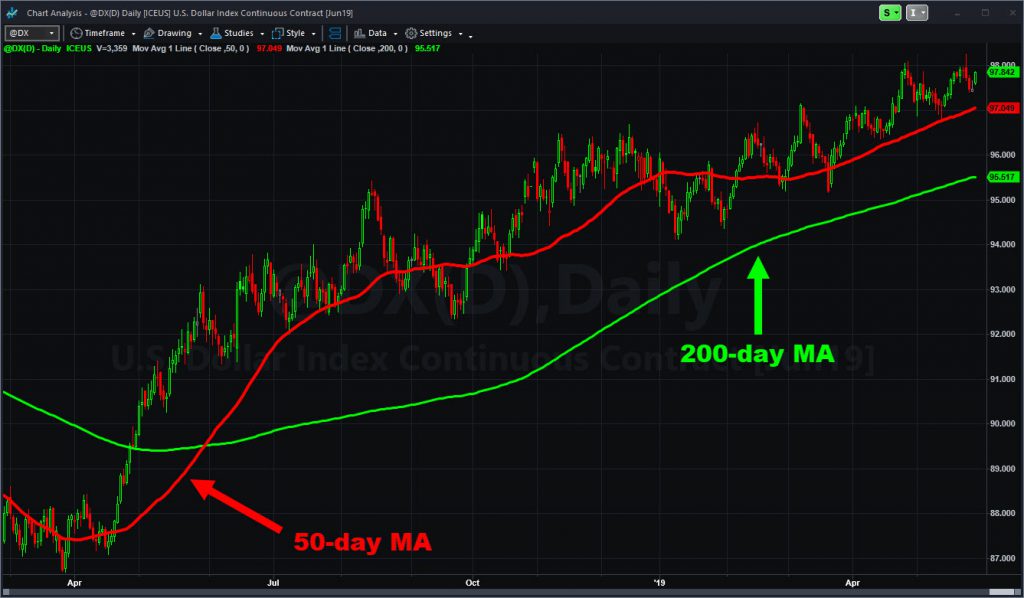Gross domestic product (GDP) is due tomorrow. It’s a good time to examine just how weird the economic situation has gotten.
Things look increasingly negative from one perspective, but surprisingly positive from another vantage point. It’s confounding experts, but may also offer opportunities for ordinary investors.
Consider the Jekyll and Hyde of consumer data. Retail sales for the month of April were downright terrible, missing estimates by a country mile. But the consumer confidence survey for that month beat forecasts. In May that reading, along with consumer sentiment, shot well past the economist projections.
Translation: People feel good about their personal finances — especially their job prospects. But they aren’t shopping as much as hoped.
Interest Rates, Factories
Next, consider interest rates. Yesterday, they fell to their lowest level in 1-1/2 years. Normally that’s a sign of impending recession or weakness in the job market. But this time, just the opposite’s the case. Payroll rose more than expected last month and unemployment hit a new 49-year low. Weekly jobless claims, a measure of layoffs, have also been dropping from a brief spike in early May.
Translation: Interest rates might be “crying wolf” on a slowdown.

But what about the industrial sector? It’s had a lot of bad news lately: weak survey data and poor-durable goods orders. But when you remember that these same numbers hit long-term highs in 2018, it might not look so bad. Also, don’t forget that some tax incentives for buying equipment expired this year.
Translation: The industrial sector has cooled, but it’s still in its strongest period in a generation.
This situation has economists all over the map in terms of what it means. Some, like Morgan Stanley (MS) are predicting a recession because of the interest rates. Others, like Mark Zandi at Moody’s Analytics, say the numbers are so good President Trump has a strong shot at reelection.
What if Things Are Just Different?
When you read economists, you find that most of their models are based on data since World War II. They have certain assumptions about employment, investment, inflation and interest rates. One of their core beliefs is that growth produces inflation, which is why interest rates tend to rise along with output.
The problem is that, while this was mostly true after 1945, it wasn’t true for much of the 19th century. That’s when prices fell, even when growth was strong and populations surged.
Next, major disruption is happening in the consumer realm as Amazon.com (AMZN) and other online retailers crush shopping centers. Thousands of traditional stores are closing: 7,150 already this year, by the latest count. What if that’s making the retail-sales data look worse than it possibly is?
Another problem is that economists don’t seem to consider the global picture. Central banks around the world are cutting interest rates as growth slows in China and Europe. This is the polar opposite of 2007 and 2008, when the U.S. was fell off the sub-prime cliff as other countries were still growing.
GDP Is Reality
If U.S. rates didn’t fall along with others, the U.S. dollar would spike. The euro could collapse the way Latin American currencies plummeted in the 1980s. It would be a disaster for everyone. So, you have to wonder why some economists are so upset about U.S. rates falling.

You can think about interest rates like a nurse taking your temperature at the doctor’s office. A reading of 105 degrees would normally be dangerous, but what if you just drank of cup of coffee and have no other symptoms of a fatal disease?
We could be facing such a situation right now. Lots of number crunchers are trying to take the economy’s temperature with interest rates, or predicting tariffs will develop into an infection. But each of these symptoms only tell part of the story.
That’s why investors will ultimately focus on tomorrow’s GDP report. It’s like a “lab test” that confirms the presence of a recession virus. It’s reality.
Forecasters are looking for a slight reduction from the 3.2 percent positive surprise reported on April 26. Manufacturing and business investment will be a drag. Higher exports and a strong consumption are expected to give boosts.
After tomorrow’s numbers, attention will turn to big monthly data like payrolls June 3-7.
In conclusion, some of the economic numbers have gotten downright weird based on what the textbooks say. But we still seem to have the steady growth, low inflation and the kind of solid employment investors crave.
Never forget that gross domestic product is the economy. And at this point, little seems to be hurting that number — despite all kinds of fears and doom-mongering.



























